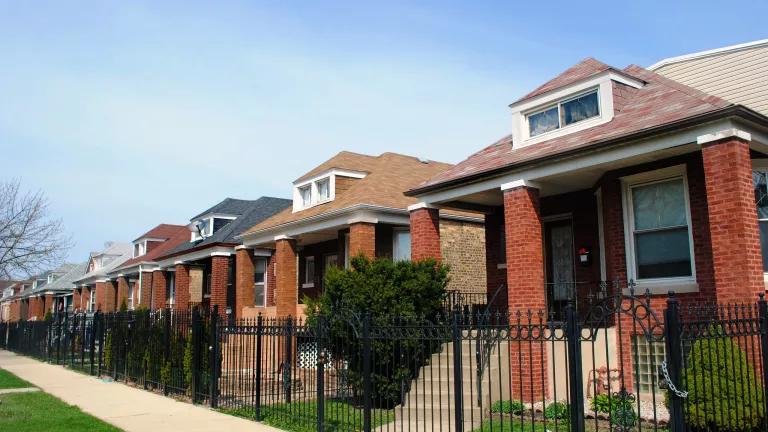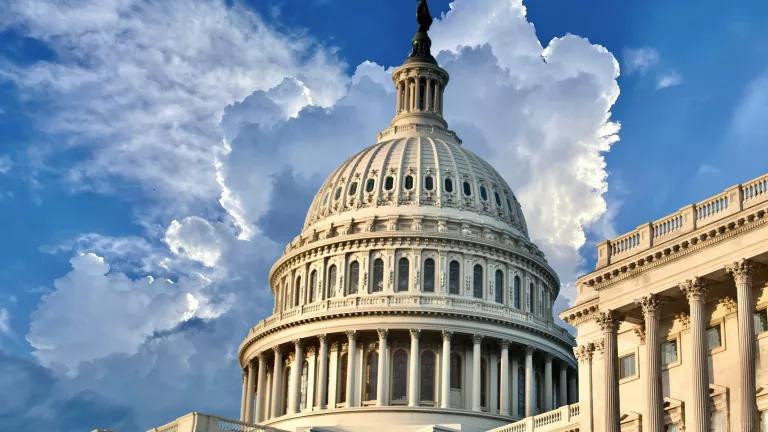NYS Leads Again: More Local Action on Climate Change

New York’s recently launched $5 million clean energy competition will spur additional renewables, energy efficiency and clean transportation programs and projects in several of New York’s largest cities. This new initiative of the New York Power Authority, the country’s largest public power provider, demonstrates New York’s continued leadership on climate change and also highlights the increasingly important role localities play in tackling this tremendous challenge.
Indeed, states like New York are showing the nation the many ways we can address Americans’ concerns about climate, the economy, and public health. And New York is doing this by using innovative tools to cut carbon pollution, all while creating good, local jobs; saving serious money on energy, not only for cities and towns, but also their residents, businesses, and community institutions; making our electric grids more reliable; and, providing cleaner air for future generations.
This “race-to-the top” competition is the latest step forward in the State’s Five Cities Energy Plans initiative, launched in 2013 to help the state’s five largest cities (after New York City)—Albany, Buffalo, Rochester, Syracuse and Yonkers—cut local government emissions by 20 percent by 2020 and citywide emissions—both public and private—by 20 percent by 2030.
This undertaking isn’t just a good in itself—though it’s that to be sure. These cities’ clean energy projects will also help New York’s meet its nation-leading goals of getting 50 percent of its electricity from renewable sources by 2030 and reducing greenhouse gas emissions 40 percent by 2030 and 80 percent by 2050.
The Five Cities Energy Plans effort, which offers these municipal governments support in developing and implementing clean energy programs, is already saving the cities $1.5 million annually. Think about that: an average of $300,000 a year per city that they can use for education, public safety, infrastructure maintenance, and other important services. And while those savings are large, they’re just a fraction of what’s possible. So the new competition will step things up further by awarding up to $5 million to the most forward-looking urban clean energy projects.
Here are the details of how the competition works:
- Each city can submit as many as four proposals and receive as much as $500,000 per project, with NYPA paying up to 80 percent of project costs, and cities and/or their utilities paying the other 20 percent.
- Proposed projects will be judged on energy savings and cost effectiveness; relevance to a city’s energy plan; shovel-readiness; innovation; reinvestment of savings; and other criteria.
- Applications are due by January 17th and winners will be announced mid-March.
New York State isn’t stopping with its largest cities, though. For these and smaller cities, towns, and villages, as well as counties, that qualify as Clean Energy Communities (CECs) under a program unveiled this summer by the New York State Energy Research and Development Authority, new outreach coordinators and technical advisors are now available to help communities develop and prioritize clean energy goals; access money and other resources; and take advantage of available technical assistance and other opportunities.
Though the CEC program was just announced in August, movement is already afoot: The Catskills’ Ulster County has just been certified as the state’s first official CEC, having completed four of 10 “high impact actions” identified by the state to help local communities become clean energy leaders. In Ulster County’s case, it established a PACE affordable financing program for energy efficiency and clean energy projects; installed electric vehicle charging stations; developed a comprehensive plan to cut the county’s carbon footprint; and, adopted energy benchmarking policies to track and report energy use in municipal buildings.
State by state and city by city is a proven and critical strategy for tackling climate change, and we may have to rely on that now more than ever. New York, with its innovative programs to save cities and towns energy and money, is once again showing the nation how to get things done.




